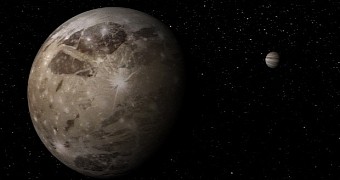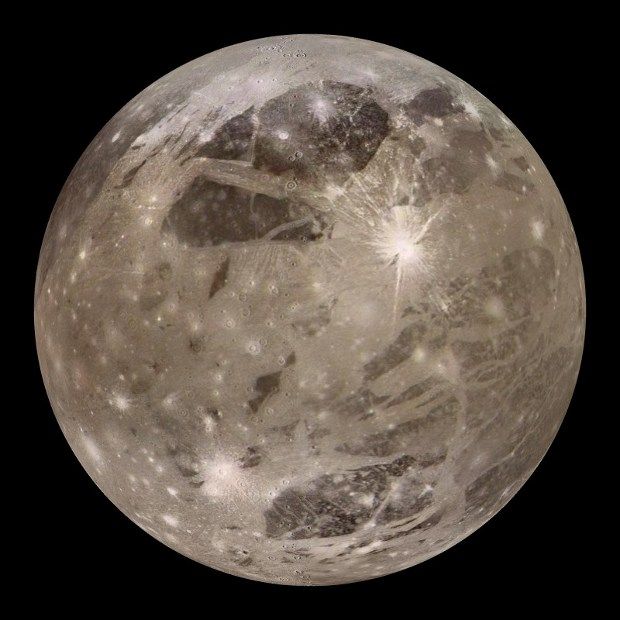Researchers speaking at this year's Lunar and Planetary Science Conference in Texas, US, announced the discovery of a rather odd and positively humongous bulge on the surface of Ganymede, Jupiter's largest moon.
Despite the fact that Ganymede was first documented by Galileo Galilei back in 1610 and has since been studied by a small army's worth of astronomers, this bulge went unnoticed for centuries.
It was only recently that researcher Paul Schenk at the Lunar and Planetary Institute spotted it while sifting through data delivered by NASA's Galileo space probe, Phys Org informs.
Having studied Ganymede's newly discovered bulge together with astronomer William McKinnon, scientist Paul Schenk found it to cover an area about the size of Ecuador, meaning nearly 284,000 square kilometers (110,000 square miles).
As for how tall this odd geographical feature is, the researchers say that it towers over the moon's surface at half the height of our planet's Mount Kilimanjaro, which is documented to be one of almost 5,900 meters (roughly 19,400 feet).
This is yet to be confirmed, but Paul Schenk and William McKinnon suspect that the bulge formed when blocks of ice originating from Ganymede's poles were carried towards its equator by an underground ocean.
Bulge or no bulge, Ganymede is still an odd place
Apart from being Jupiter's absolute largest moon, Ganymede is the biggest natural satellite in our Solar System. Thus, this celestial body is estimated to measure nearly 5,300 kilometers (3,300 miles) in diameter.
Dark regions sporting fairly deep impact craters account for about one-third of Ganymede's surface. As noticeable in the images accompanying this article, these regions are intertwined with somewhat lighter areas crisscrossed by grooves and ridges.
Although quite impressive, it's not its geography alone that makes Ganymede a unique and odd place. The reason astronomers are utterly fascinated with this moon is that, according to recent investigations, it has its own magnetic field.
This magnetic field explains why the satellite displays aurorae resembling bright ribbons made of electrified hot gas in the proximity of its north and south poles, scientists say.
For quite some time now, there has been speculation that Ganymede hides a mammoth ocean under its icy surface. If it really does exist, this underground alien ocean probably holds more water than all the oceans here on Earth combined do.
The behavior of the moon's aurorae hints at the presence of such a massive body of water under the celestial body's crust. Add to this the bulge discovered by Paul Schenk, and Ganymede might, in fact, be home to a yet-to-be-discovered ocean.

 14 DAY TRIAL //
14 DAY TRIAL // 

